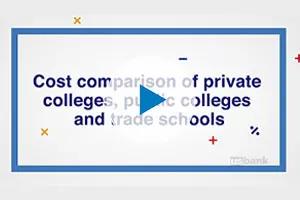
Should my college student have a credit card?

Bank Notes: College cost comparison

As modern students have moved into an increasingly digital world, higher education finds itself straddling the line between legacy payment systems and evolving student expectations.
Whether ordering food online or sending money to friends with cash apps, students can now live in a mostly cashless society. Is it any surprise that they demand similar options from institutions? As a result, making college-related payments has transformed dramatically from checkbooks and in-person to digital and online portals.
Students live in a virtually digital world, where many have barely written checks. In just the past few years, the world has completely altered, and payment expectations have accelerated toward digital. Expectations for schools have changed and are changing because of students.
School ID cards can both grant access to campus buildings and act as debit cards. Most things about the student experience are instant and easy, with the reality that students regularly send money to each other via convenient payment apps.
The pandemic increased the rate of advancement for adoption of online payment portals and cashless payment methods. What was a necessity during shutdowns triggered the realization for all generations that what used to take days or weeks can now be done with a few clicks.
The latest generation of college students are digitally native and accustomed to modern technology. Aligned to the growing norm, they have little patience for long periods between payments and reimbursements for incurred costs. New advancements that connect instant payment options to consumers in a simplified format are one way to address this issue.
While instant payments aren’t new, the way they can be connected from institutions to the people they pay is rapidly evolving. Innovative apps are available so when colleges went remote during the pandemic, they had ways to issue refunds to students without the manual tasks and expensive costs of checks.
“We’re such a mobile society in this age group,” notes Michelle Hemmesch, director of student accounts at Saint John’s University. “Students expect everything to be done on their phones.”
To meet those needs, Saint John’s and the nearby College of Saint Benedict made the decision to give students a way to choose the payment type they want to receive through a school-branded website via their computers or phones.
The modern payment portal eliminates paper and allows for digital two-way interaction. The challenge and cost of cutting paper checks, mailing or issuing them, then having students manually deposit them is eliminated. While these are drastic new measures for long-standing institutions, it’s just another day in the life of a student.
“[It] may seem cutting edge to us,” Hemmesch says, “but the students are so immersed in their culture of everything is online and fast that a solution like this is just something they’ve come to expect.”
Read more with the article, Colleges respond to student needs by offering digital payments.
Providing digital payment options doesn’t just help students. Applying the latest technology to the way you manage the business side of your institution can streamline operations, reduce costs and improve cash flow. There’s a business case for offering payees convenience.
When processes are manual, everything takes more time and costs more money. For refunds and reimbursements, you can get rid of the cost of paper and mailing by implementing digital payment types.
With the goal of keeping costs down to keep students costs down, there’s an opportunity for institutions to embrace the future for the benefit of all.
Institutions need to run to keep up with evolving student expectations. The one constant will be change. As more people in all age groups are exposed to the benefits of digital, there will be more demand to have those options available in higher education. It will be up to institutions to implement the appropriate tools and either struggle to maintain pace or stay a step ahead.
If your higher education organization is looking for what's next, contact us for an initial discussion.


